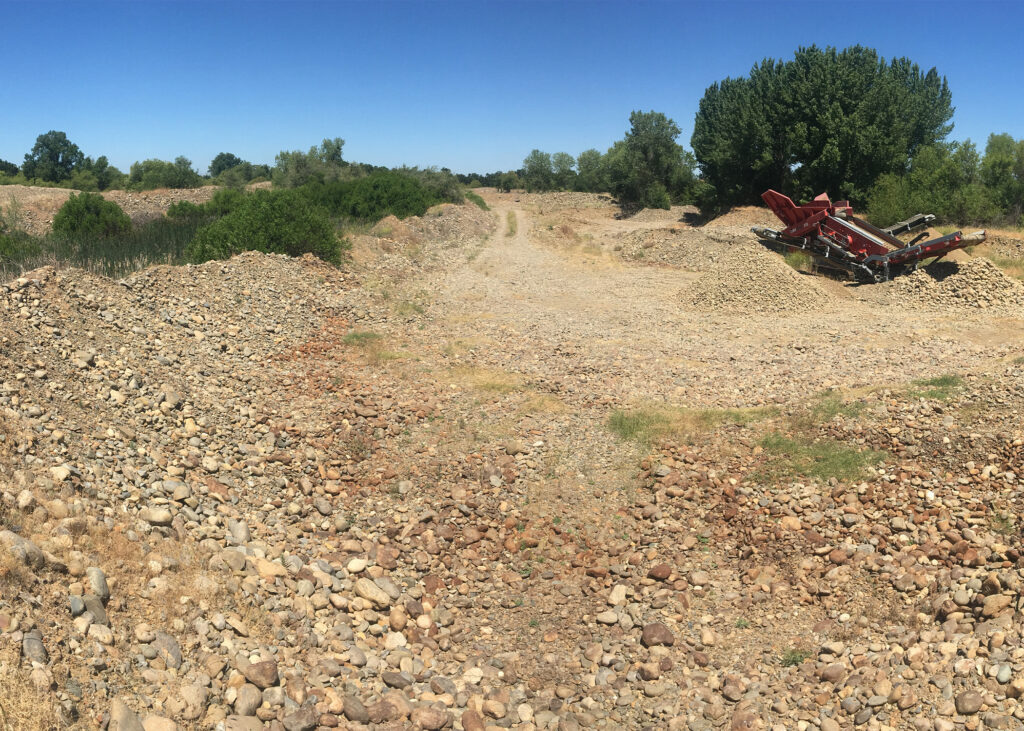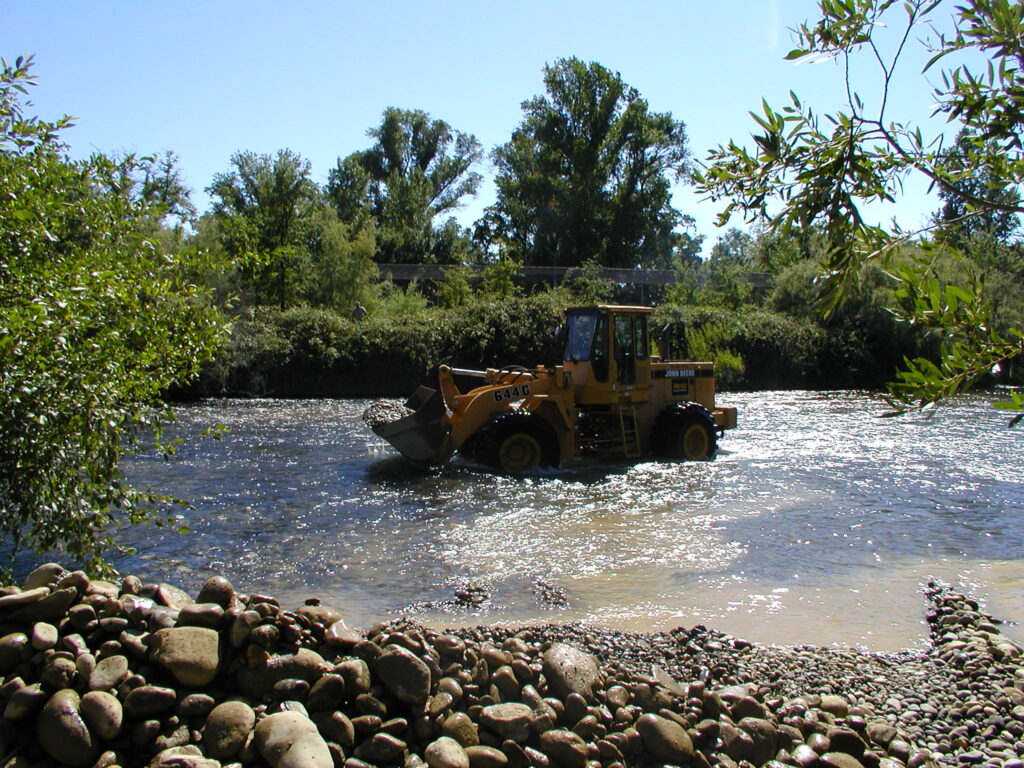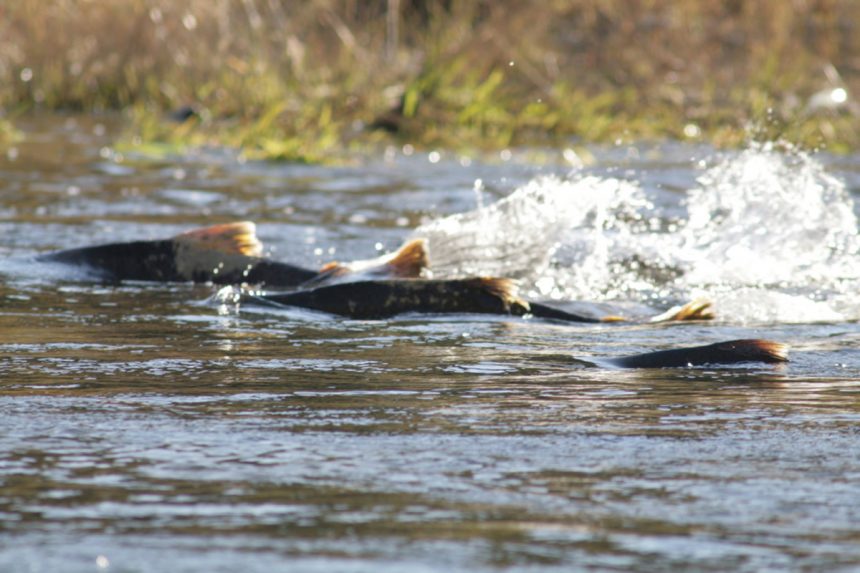By Cindy Sandoval, USFWS
In California’s Central Valley, along the Merced River, the low rumble of bulldozers signals renewal. Crews are returning clean, sorted gravel to the riverbed, rebuilding spawning habitat that salmon and steelhead have relied on for thousands of years.
This restoration is part of a long-term effort led by the California Department of Fish and Wildlife (CDFW) and supported by Sport Fish Restoration Act (SFR) dollars. The SFR work, supported through federal excise taxes paid by tackle manufacturers, a portion of the fuel tax attributable to motor boat fuel use, and funds from state fishing license sales, provides critical dollars for habitat restoration, monitoring, and fisheries management nationwide. In California, it is helping reverse decades of damage caused by mining, dams, and development.
The San Joaquin River and its tributaries once supported some of the largest salmon and steelhead runs on the West Coast. Flowing from the Sierra Nevada to the Pacific, the water carried fish seeking clean, loose gravel beds where females could dig nests, or redds, to lay thousands of eggs. But hydraulic mining stripped rivers of gravel, and dams blocked natural replenishment.
Without spawning habitat, fish populations declined. “The once-abundant salmon and steelhead struggled to find the places they need to reproduce,” says CDFW Senior Environmental Scientist Steve Tsao.

Since the early 2000s, CDFW has worked with partners to rebuild these important spawning grounds through gravel augmentation, a process of returning carefully prepared gravel to depleted rivers. At the center of this work is Merced River Ranch, a 300-acre property purchased by CDFW to serve as a long-term gravel source. Once heavily mined, the ranch has large mounds, known as dredger tailings, that now provide thousands of cubic yards of material each year.
“With mounds as tall as three stories, this property holds a lot of gravel for our restoration efforts,” explains CDFW Environmental Scientist Dennis Blakeman.
At the ranch, the gravel is screened, sorted, and cleaned before being placed in the river with machinery designed to minimize environmental impacts. Once in place, it becomes prime spawning habitat for returning fish. A single restored riffle can host dozens of redds, each producing thousands of eggs.
Thanks to SFR funding, restoration efforts also include the creation of side channels and floodplains, providing calm, shallow water where juvenile salmon and steelhead can grow, feed, and shelter. “This kind of habitat is critical to the survival of young fish,” says Tsao. “And the benefits extend beyond salmon and steelhead. Healthier rivers mean more aquatic insects, cleaner water, and better conditions for native fish and waterfowl.”
Restoration work is more than just adding gravel, it’s about putting it in the right place, at the right time. CDFW biologists monitor returning salmon each year, collecting data on population size, spawning distribution, and habitat use to guide future work. Through partnerships and by targeting the most promising habitat areas, CDFW ensures restoration delivers the greatest benefit. “These restoration efforts are made possible through strong partnerships, with key contributions from the Merced Irrigation District, U.S. Bureau of Reclamation, U.S. Fish and Wildlife Service, and California Department of Water Resources,” adds Blakeman.

Back on the Merced River, heavy equipment continues to rebuild riffles and side channel habitat. Fresh gravel sits in place, waiting for salmon and steelhead to return. Each load is more than rock, it’s a lifeline made possible by the Sport Fish Restoration Act, strong partnerships, and years of planning. Together, they are giving these iconic fish a fighting chance to complete their ancient migration and helping California’s rivers recover their resilience in supporting ecosystems, water quality, and communities for generations to come.
The Sport Fish Restoration Act turns 75 years old this year. It has been a cornerstone in ensuring that America’s sport fish populations and aquatic habitats are healthy, sustainable, and accessible for all. This partnership among federal excise tax-paying manufacturers, state fish and wildlife agencies, and the U.S. Fish and Wildlife Service has proven to be one of the most successful conservation funding models in the world, supporting fisheries management that meets the local level needs of every U.S. state, commonwealth, and territory. Learn more at Sport Fish Restoration at 75 – Partner with a Payer.

